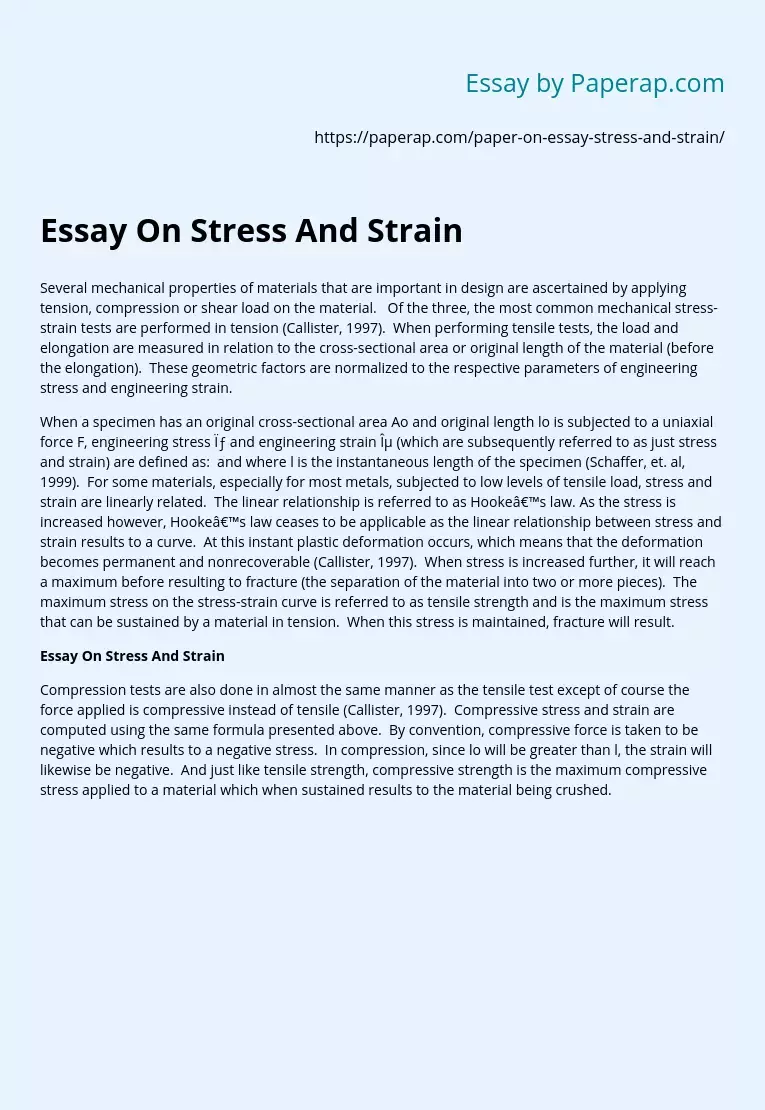Essay On Stress And Strain
Several mechanical properties of materials that are important in design are ascertained by applying tension, compression or shear load on the material. Of the three, the most common mechanical stress-strain tests are performed in tension (Callister, 1997). When performing tensile tests, the load and elongation are measured in relation to the cross-sectional area or original length of the material (before the elongation). These geometric factors are normalized to the respective parameters of engineering stress and engineering strain.
When a specimen has an original cross-sectional area Ao and original length lo is subjected to a uniaxial force F, engineering stress σ and engineering strain ε (which are subsequently referred to as just stress and strain) are defined as: and where l is the instantaneous length of the specimen (Schaffer, et.
al, 1999). For some materials, especially for most metals, subjected to low levels of tensile load, stress and strain are linearly related. The linear relationship is referred to as Hooke’s law.
As the stress is increased however, Hooke’s law ceases to be applicable as the linear relationship between stress and strain results to a curve. At this instant plastic deformation occurs, which means that the deformation becomes permanent and nonrecoverable (Callister, 1997). When stress is increased further, it will reach a maximum before resulting to fracture (the separation of the material into two or more pieces). The maximum stress on the stress-strain curve is referred to as tensile strength and is the maximum stress that can be sustained by a material in tension.
When this stress is maintained, fracture will result.
Essay On Stress And Strain
Compression tests are also done in almost the same manner as the tensile test except of course the force applied is compressive instead of tensile (Callister, 1997). Compressive stress and strain are computed using the same formula presented above. By convention, compressive force is taken to be negative which results to a negative stress. In compression, since lo will be greater than l, the strain will likewise be negative. And just like tensile strength, compressive strength is the maximum compressive stress applied to a material which when sustained results to the material being crushed.
Essay On Stress And Strain. (2019, Dec 05). Retrieved from https://paperap.com/paper-on-essay-stress-and-strain/

